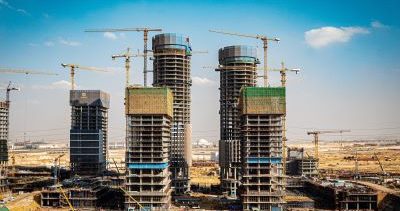Principal Thoughts: The Hackitt Report and the Impact on the Built Environment
Posted on: 5 July, 2018
Welcome to the latest edition of Ashley Wheaton’s ‘Principal Thoughts’. In this edition, Ashley provides his insight into the likely implications of the Hackitt report and speaks with colleagues Jane Ballantyne, UCEM Programme Leader for BSc (Hons) Building Surveying, and Stephen Bartle, Director Commercial and Business Development, about what impact it will have on the Built Environment.
The Grenfell Tower fire broke out just over a year ago on 14 June 2017 in the 24-storey tower block in North Kensington. Following the fire, questions were raised about the part which building regulations may have played in the tragedy.
On 28 July 2017, Amber Rudd, MP for Hastings and Rye, and Sajid Javid, the Home Secretary, commissioned Dame Judith Hackitt to conduct an independent review into building regulations and fire safety. The review focused on regulations that apply to high-rise residential buildings.
The final report was issued on 17 May, titled Building a Safer Future – Independent Review of the Building Regulations and Fire Safety: Final Report, following the publication of an interim report in December 2017. The report set out more than 50 recommendations for the government as to how to deliver a more robust regulatory system.
The proposed new framework in intended to operate as an integrated package and requires the implementation of each element in order for change to happen. Implementing the package proposed may take some time. Whilst some of the recommendations can be delivered in the short term, some will require primary legislation. In the meantime, the industry must start making changes to meet the guidelines set out in the report.
The report is clear in naming the public sector as responsible for building control, after it was privatised in the 1980s and states that there should be a single, more streamlined, regulatory route to oversee building standards. It recommends a new Joint Competent Authority (JCA) comprising Local Authority Building Standards, fire and rescue authorities and the Health and Safety Executive to oversee better management of safety risks in these buildings across their entire life cycle. Hackitt suggests that some of those who construct buildings have been treating the minimum standards in the Approved Documents as a bar to be negotiated down, rather than owning the principles of a safe building and meeting the outcomes set out in the regulations. Putting a government body back in charge of this service might help to eradicate this problem, but there will still be an important role for private sector Approved Inspectors to expand the capacity of Local Authority Building Control (LABC).
Hackitt also, and quite rightly, sets out that professionals in the Built Environment will need appropriate qualifications to be able to assess and approve building control. The report suggests that currently the roles and responsibilities of those procuring, designing, constructing and maintaining buildings are unclear. While there are a number of specific qualifications that cover the need for competence in fire safety in residential properties, there is a need for a clearer definition, competence framework and accreditation for a role covering building safety management in higher risk residential buildings (HRRBs).
There are between 2000 and 3000 buildings over ten stories in the private sector, all of which will now need to be identified and checked following the guidelines set out in the report. All of this additional work is likely to have a huge impact on building control resources and could result in a severe skills and workforce shortage due to both the lack of current qualified professionals in the sector, and the amount of time that it will take to upskill and qualify new personnel.
Apprenticeships could be a very substantial part of the solution to solving the skills crisis and worker shortage in building control as they allow people to gain a qualification while working. Current surveyors could become qualified to assess and approve buildings while continuing in their current job. When provided through an online institution such as UCEM, the programmes will provide reach across the whole country and offer flexibility to those already working in the industry, as well as those who are looking to enter Built Environment careers. However, this seemingly simple and effective solution – undertaking an apprenticeship programme – comes with immense complexity and difficulties due to lead times and funding shortages.
We are probably looking at a lead time of at least five years until the sector will have a fully qualified workforce because it will take, at best, one year to get an apprenticeship standard approved and then at least four years for apprentices to complete the programme. We can’t afford to wait that long.
On top of the lead time barrier of training a new, qualified workforce, there’s also a significant funding gap. The Institute for Apprenticeships has approved a funding band of £12,000 (towards the new requirements) but it is likely to cost more like £27,000 to provide the level of training needed. With a £15,000 gap, no university will be able to cover the costs of delivering the required programmes.
This funding issue is further compounded by the fact that the local authorities (now responsible for building control), have their own existing and significant funding shortages. So, the question as to how they will afford to train the surveyors to the standard needed appears to remain unanswered.
The number of existing high rise buildings that will need to be checked on a regular basis is estimated to be in the thousands. This, combined with the limited number of professional surveyors who work in the sector and are qualified to conduct assessments on the safety of these buildings, will leave a large number of potentially unsafe buildings in existence. What we need, and fast, is a credible qualification, appropriately funded and accessible to those in full-time employment, which can ultimately enable them to do the job at hand.
UCEM is an online education provider and its approach to supported online learning provides students with the flexibility to balance their study commitments around their work and lifestyle. Supported online education provides huge benefits, such as a flexible learning experience for students who have other commitments or perhaps don’t live near an institution that provides bespoke Built Environment programmes. This may well be particularly useful when providing building control training to surveyors who are situated around the country with limited access to traditional institutions offering the programme they require.
At UCEM, we are committed to contributing to a better Built Environment sector through excellence in online learning. We deliver accredited apprenticeship programmes, as well as undergraduate and postgraduate degrees. For more information take a look at our Study UCEM page.
For more sector updates and industry news, make sure you’re following us on Twitter, Facebook and LinkedIn.





